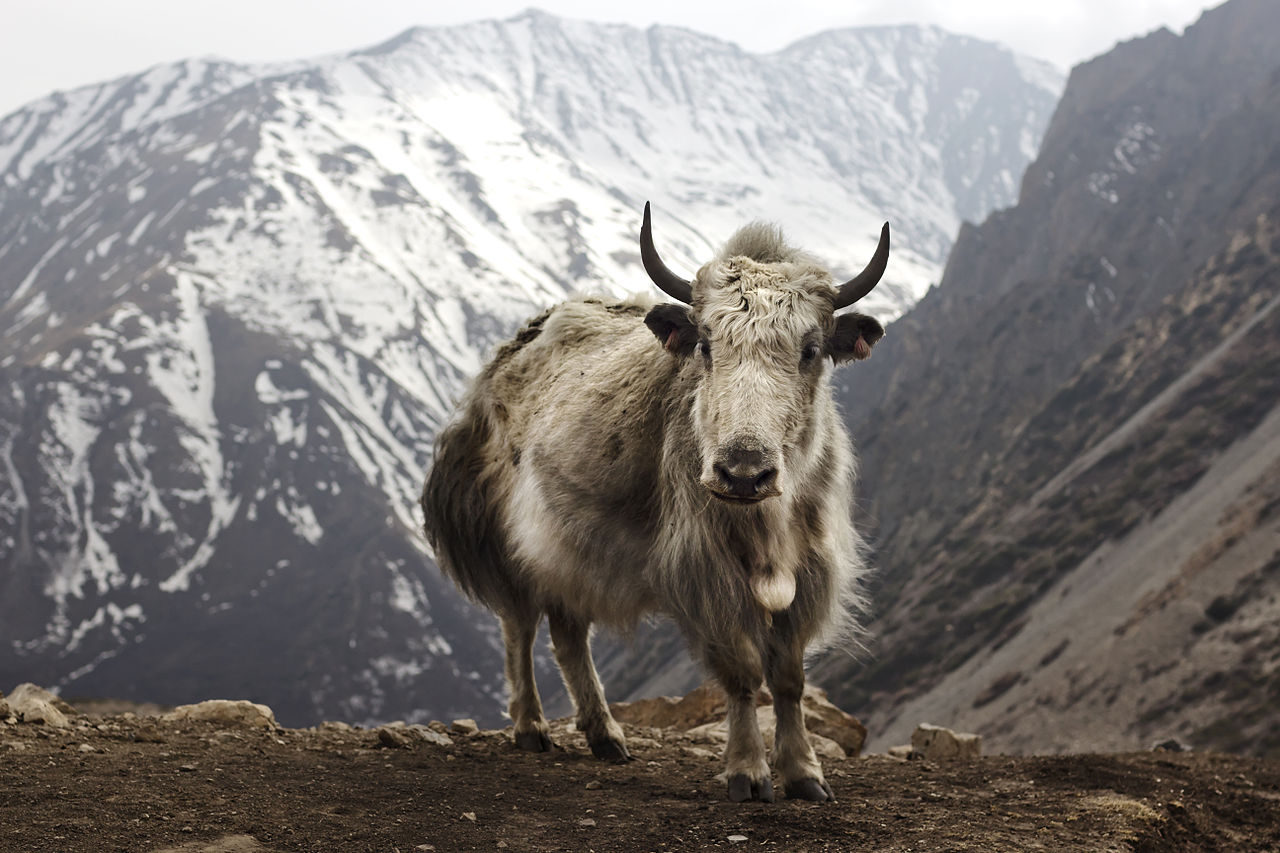https://en.wikipedia.org/wiki/Nepal
Yak facts
- Over 90% of the world’s yak population of nearly 15 million lives on the Tibetan Plateau in the Himalayas.
- Lamps in Tibetan monasteries are fuelled by yak butter. - Yak cheese has higher amounts of heart-healthy fats than cheese from dairy cattle.
- Yak polo, played on yaks instead of horses, was pioneered in Mongolia a decade ago
- A major use for the yak’s coarse tail hair is to create fake beards worn by actors in Chinese opera.
- In local communities, yak bone is often made into exquisite handicrafts, including combs, buttons and ornaments.
- The only natural predator of the wild yak is the Tibetan wolf.
- In Mongolia yak milk is fermented in a leather pouch and distilled as a “milk wine” called archi.
- In winter a wild yak can survive temperatures as low as – 40 degrees (C).
- A wild yak doesn’t reach full size until six to eight years of age.
- Yaks in the wild, most usually give birth in June and a single calf is born every other year.
- Yaks live in herds of 10 to 100 animals that are composed of large number of females and several males.
- Dried yak dung is used as fuel on the treeless Tibetan plateau.
- During the winter yaks use their long horns to shovel through snow to find food.
- Horns are also used for the protection against the predators.
- Hooves of yaks are split, which facilitate movement across the rocky and icy terrains.
- Wild yak can survive up to 20 years in the wild. Domesticated yak can survive few years longer.
- The male wild yak can reach up to 6.5 feet high at the shoulder and can weigh as much as 2,200 pounds. Wild female yaks are up to a third of the male’s size. Domestic yaks are much smaller in size.
- Even in the below-freezing winters, yaks have been spotted bathing in lakes and rivers. This is because yak’s warm coat provides insulation through a thick outer coating of long hair and a dense inner coating of matted, shorter fur.
- It is believed that the strength of yak wool comes from the high levels of amino acids contained within the fibres.
- Yak wool is very resistant to static electricity meaning garments a less likely to spark or cling to the body during dry conditions.

Click below for 3D images of places in Nepal


